Editor’s Key Takeaways: Glossy vs Matte: Choosing the Best Photo Paper

Choosing the right paper for photo printing is crucial as it influences the final appearance of your images. This article delves into the key differences between glossy and matte photo paper, outlining their pros and cons.
- Glossy Paper: Recognizable by its reflective sheen, making colors and tones appear vibrant and bold.
- Advantages:
- Makes a statement with rich tonality and sharp, defined edges due to its smooth surface.
- Offers a range of gloss levels from subdued luster to ultra-glossy metallic finishes.
- Generally inexpensive and easily accessible.
- Matte Paper: Matte finishes are non-reflective, giving photos a muted and subtle look.
- Advantages:
- Reduces glare and reflections, making it suitable for framing behind glass.
- Less prone to fingerprints and smudges.
- Offers a softer and more artistic rendition of images.
- Considerations:
- Glossy paper is ideal for images with high contrast and vibrant colors but may suffer from glare under bright lights.
- Matte paper is excellent for a subtler appearance and practical use but may lack the visual “pop” of glossy photos.
In conclusion, the choice between glossy and matte photo paper depends on your aesthetic preference and the display conditions of your photograph.
When you buy through links on our site, we may earn a commission at no cost to you. We evaluate products independently. Commissions do not affect our evaluations.
Introduction
Photographers take their time to perfect camera settings post-processing techniques. Obviously, these actions have a direct impact on the appearance of your images. But, when it comes time to print, another aesthetic element comes into play – the materials you use to host your image. Choosing what paper you want to print on simply comes down to glossy vs matte. In this article, we explore the pros and cons of each finish.

Glossy vs Matte Photo Printing
In the grand scheme of things, photo paper may not seem like a big deal. However, this notion couldn’t be further from the truth – it plays a huge role in the appearance of your photograph. While there’s a wide range of stylistic options to choose between, paper finishes are generally categorized as glossy or matte.
Related Article: Are Laser Printers Good for Photos?
How can you tell the difference between glossy and matte papers? And more importantly, which one provides the best-looking results? We’ve cracked down on the great glossy vs matte photo debate with a comprehensive look at each of their strengths and weaknesses.
About Glossy Paper
Have you ever seen a photograph that almost seems to shimmer in the right light? All glossy photos have a reflective sheen to them, which catches the light and bounces it back at viewers.

Advantages
- Makes a statement: The tones and colors of glossy prints are generally bold and vibrant. The shiny surface is the hook, while the rich tonality reels viewers in.
- Added image clarity: Because glossy papers have such a smooth surface, printed images boast sharper, more defined edges.
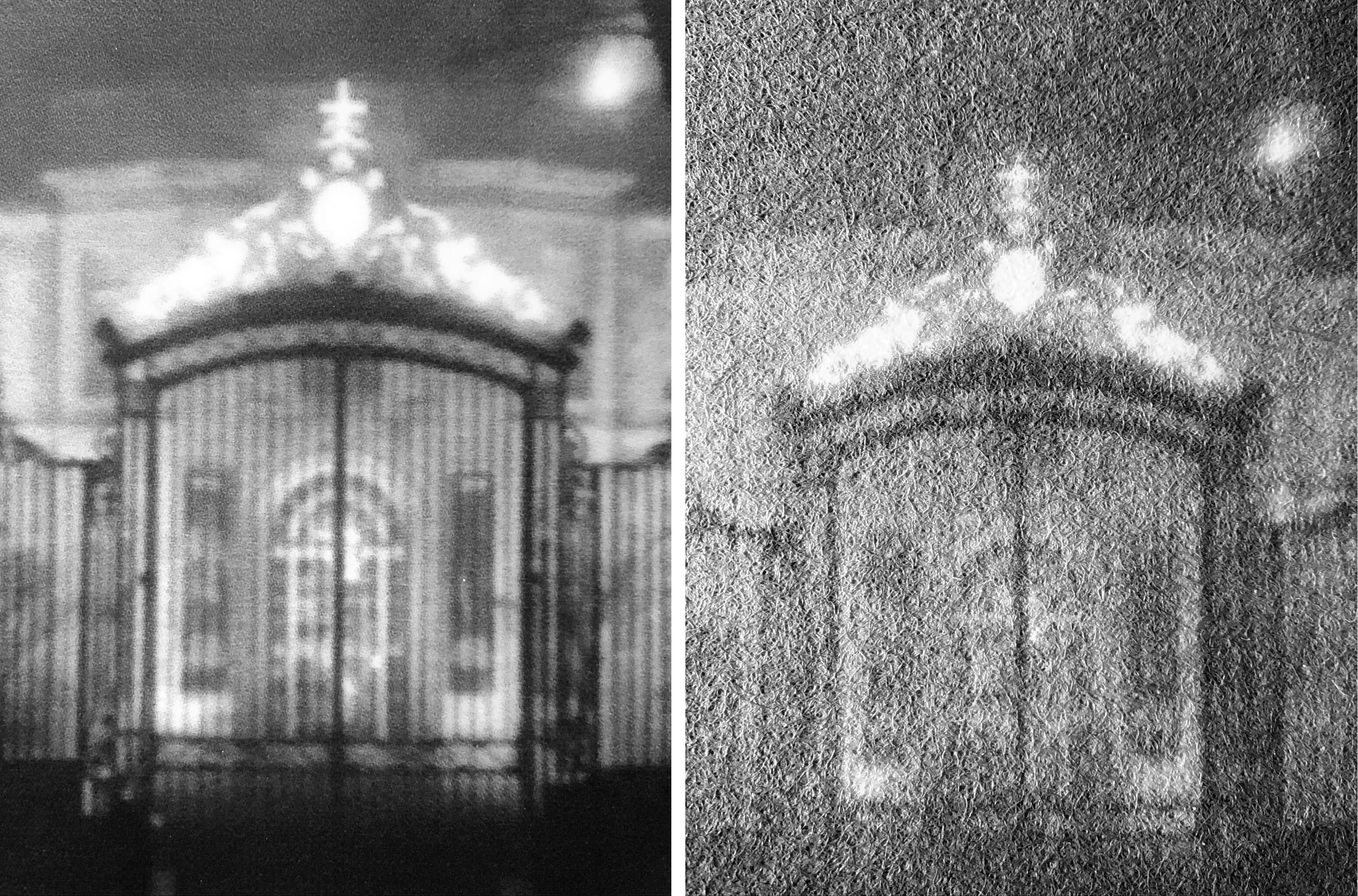
- Varying levels of reflection: There is a wide gamut of glosses to choose between. You can go for a more subdued luster, or go all out with ultra-glossy metallic prints.
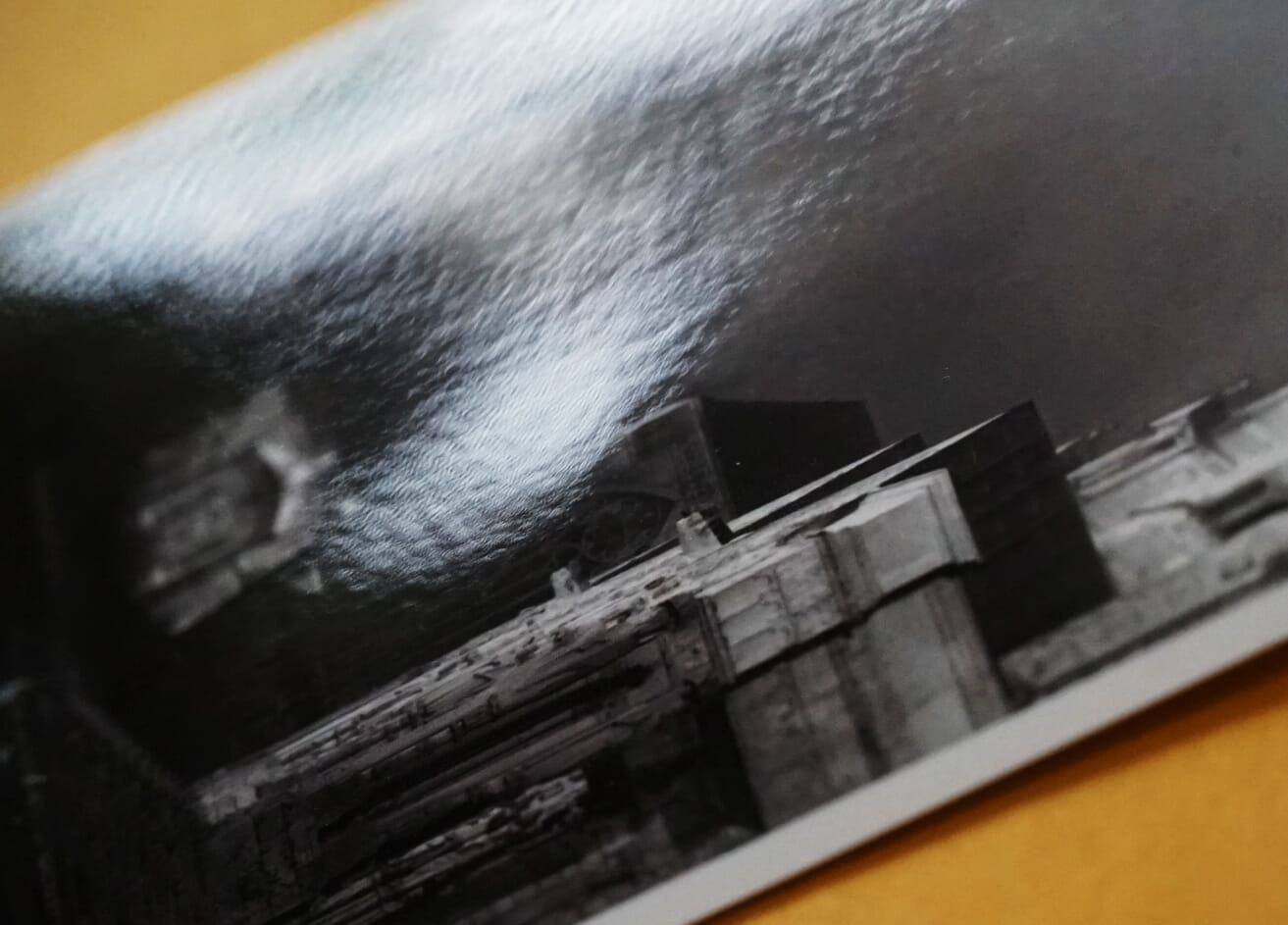
- Inexpensive and accessible: Different papers use different coating formulas to apply gloss, but as a general rule glossy prints absorb less ink. Therefore, glossy prints often cost less than matte.
Disadvantages
- Presentation difficulties: Because glossy prints reflect light, images can be difficult to view under certain circumstances. In particular, pairing a glossy print with a glass frame can cause too much reflection (to the point of being distracting).
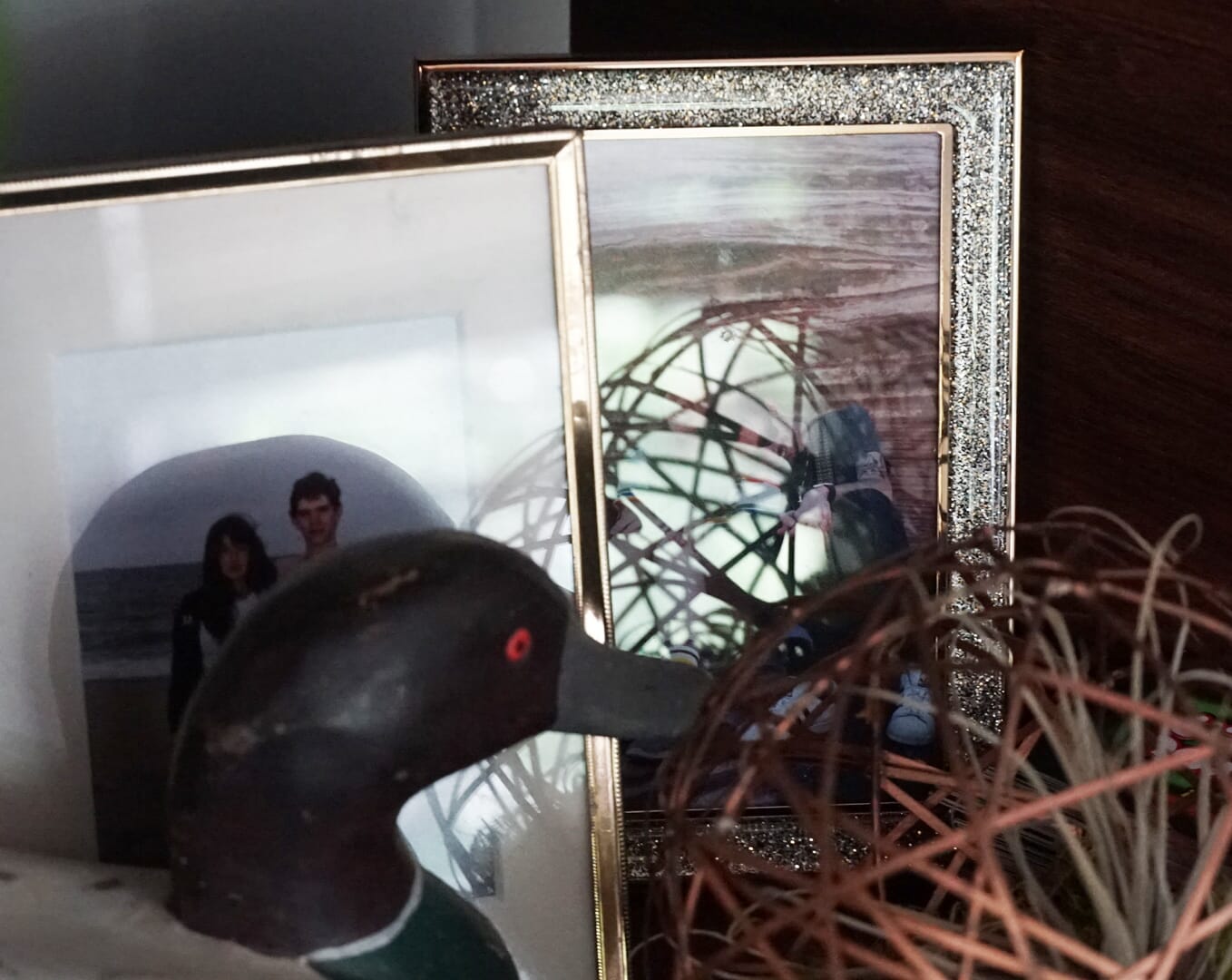
- Sticky situations: Glossy papers tend to stick to surfaces that they come in contact with. Something as simple as switching out the frame of your photograph can potentially damage your print.
- Easily damaged: Glossy papers often have very little in the way of surface protection. This makes prints more susceptible to scratches and kinks. On top of that, the shiny surface easily picks up fingerprints.
When to Use Glossy Prints
If you’re new to printing photos, glossy prints are an excellent starting point. Details come out crisp, and the tones are much more likely to match what you see on your monitor’s preview. Because of this, there’s a lot less trial, error, and tweaking involved in perfecting glossy prints.
The bold colors of glossy photo prints are great for high-resolution images. They also work well for any sort of promotional material. In short, a glossy print grabs attention and shows off any subject as clearly as possible.
Keep in mind that glossy prints are often “loud” enough that an ostentatious frame isn’t a necessity. What’s more, the reflections from frame glass can clash with reflections from the sheen of the print. A little bit will take you a long way – the smaller you print, the less light the surface of your photo will bounce back.
About Matte Paper
Glossy is great, but not every image has to be shiny and slick. Matte photos have uneven surfaces, which in turn scatters light rather than reflects it. Here are the pros and cons matte has to offer.

Advantages
- Versatile display: You won’t get the “shine” on matte that you find with glossy finishes. For this reason, matte prints are easy to view in frames or under multiple light sources.
- Added durability: The uneven surfaces of matte prints are much less likely to pick up scratches. They do not easily absorb fingerprints, making them a bit easier to handle.
- An extra visual element: The texture of the matte paper can add to the visual appeal of a photograph. The thickness and tooth of your paper will impact the look of your final product.

Disadvantages
- Duller tones: Matte prints sometimes look a little dull. Blacks won’t be as dark, whites won’t be as bright, and there’s a smaller color gamut to work with.
Related Posts

- Less definition: Paper texture can be a double-edged sword. Matte papers – especially those with “rougher” grains – won’t produce ultra-sharp, high-definition images.
- Higher price tag: Matte paper is more absorbent than glossy, and it takes more ink to get distinct colors and tones. In addition, specialty matte materials such as rice paper or cotton rag can be expensive.
When to Use Matte Prints
Big prints play well with matte photos. They don’t reflect light, and they look great in frames on a wall. This, in conjunction with paper texture, makes it a popular choice for fine art gallery pieces.
The added durability also makes matte prints the go-to material for photo books and prints that are frequently handled. While they’re less flashy than glossy prints, matte photos are also less likely to pick up scratches and fingerprints from viewers.
Matte printing isn’t always easy, because of its potential to look dull and less defined. Even for experienced printers, learning how to get a great-looking matte print takes time and patience. But, if you can get past initial hiccups, it’s entirely possible to make beautiful mattes that make just as much of a statement as gloss.
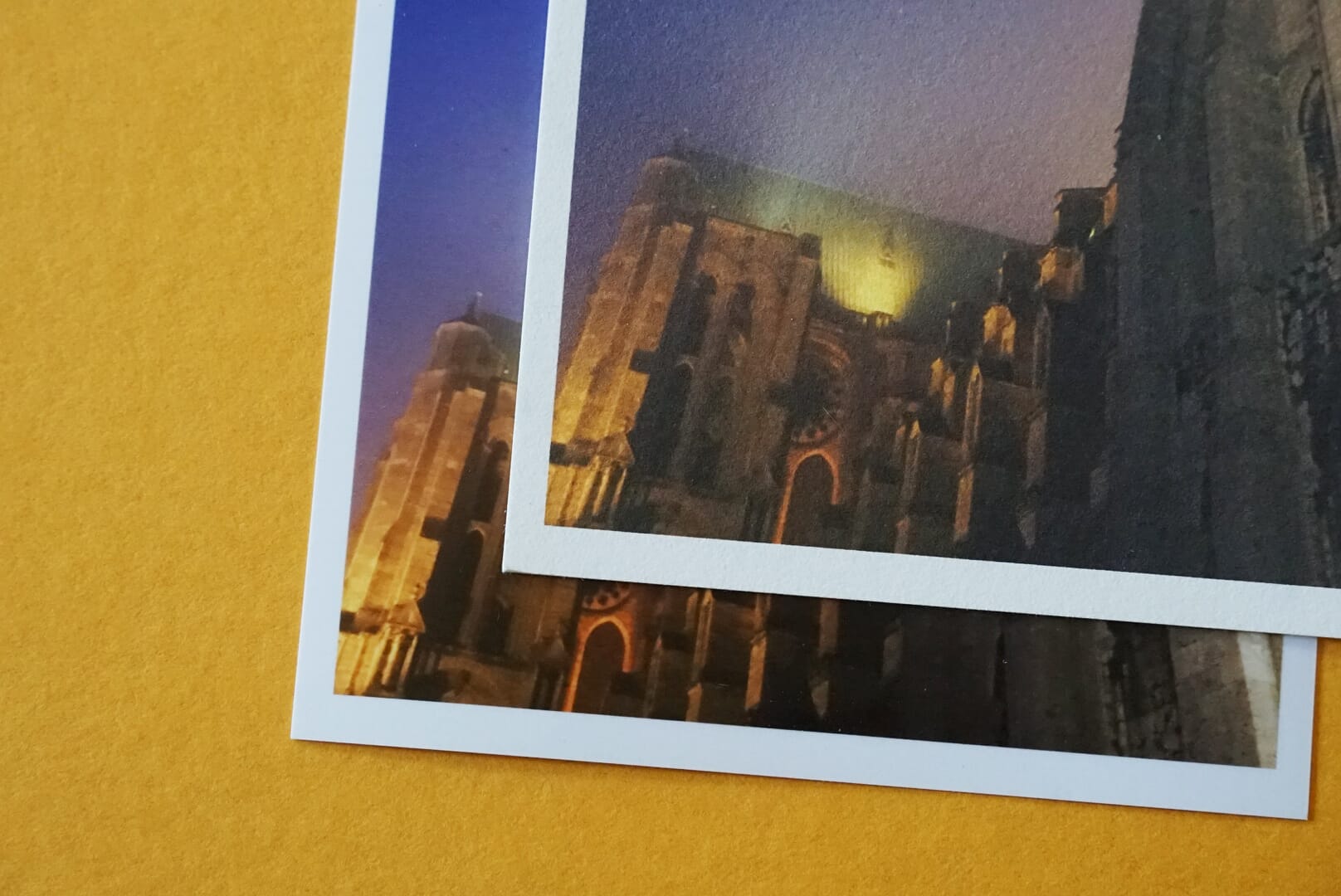
Tips for Perfect Presentation
- Experiment with different types of paper. Not all papers are created equally. If you have access to a printer, try printing the same picture onto multiple types of paper. Compare and contrast the results.
Pay attention to how each material interacts with light. Take notes on how each paper handles the darkest and lightest parts of your image. Finding your personal paper preference is a matter of trial and error, so try a little bit of everything to find what you like.
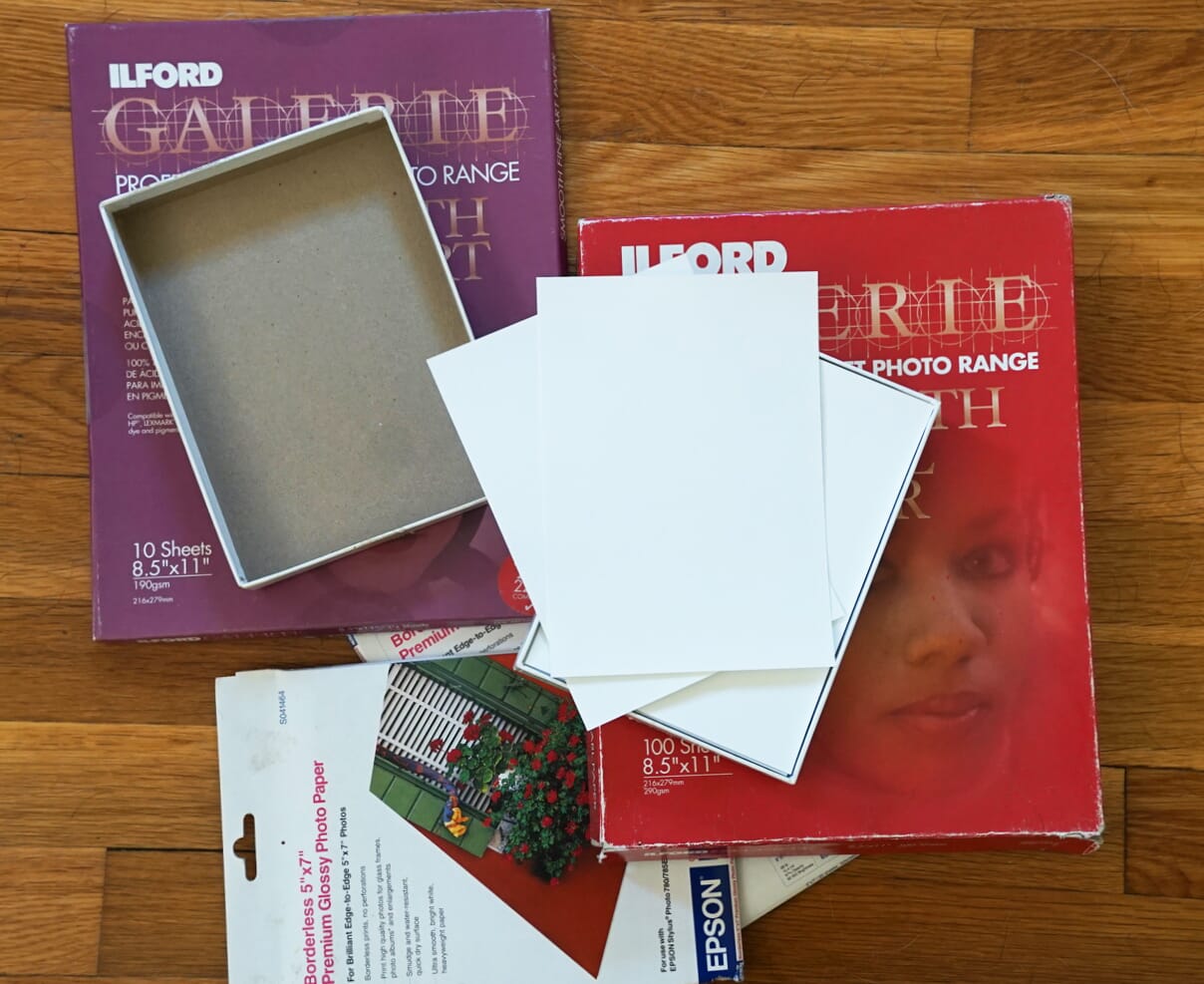
- Consider your end result. Choosing between glossy vs matte photos often comes down to where the print will ultimately end up. Are you printing product shots for a client? Large format for an exhibition?
Related Posts
On technical and aesthetic levels, there’s a time and place for both glossy and matte prints. Think about your audience and environment when deciding how to print.
- Don’t forget in-between options. There’s a gamut between pure matte papers and pure gloss papers. Luster, pearl, silk, and semi-gloss papers all fall somewhere in between the two extremes.
These papers boast features of both matte and glossy finishes. If you need something that’s both presentation-friendly and bold-looking, you may want to turn to an intermediate alternate.
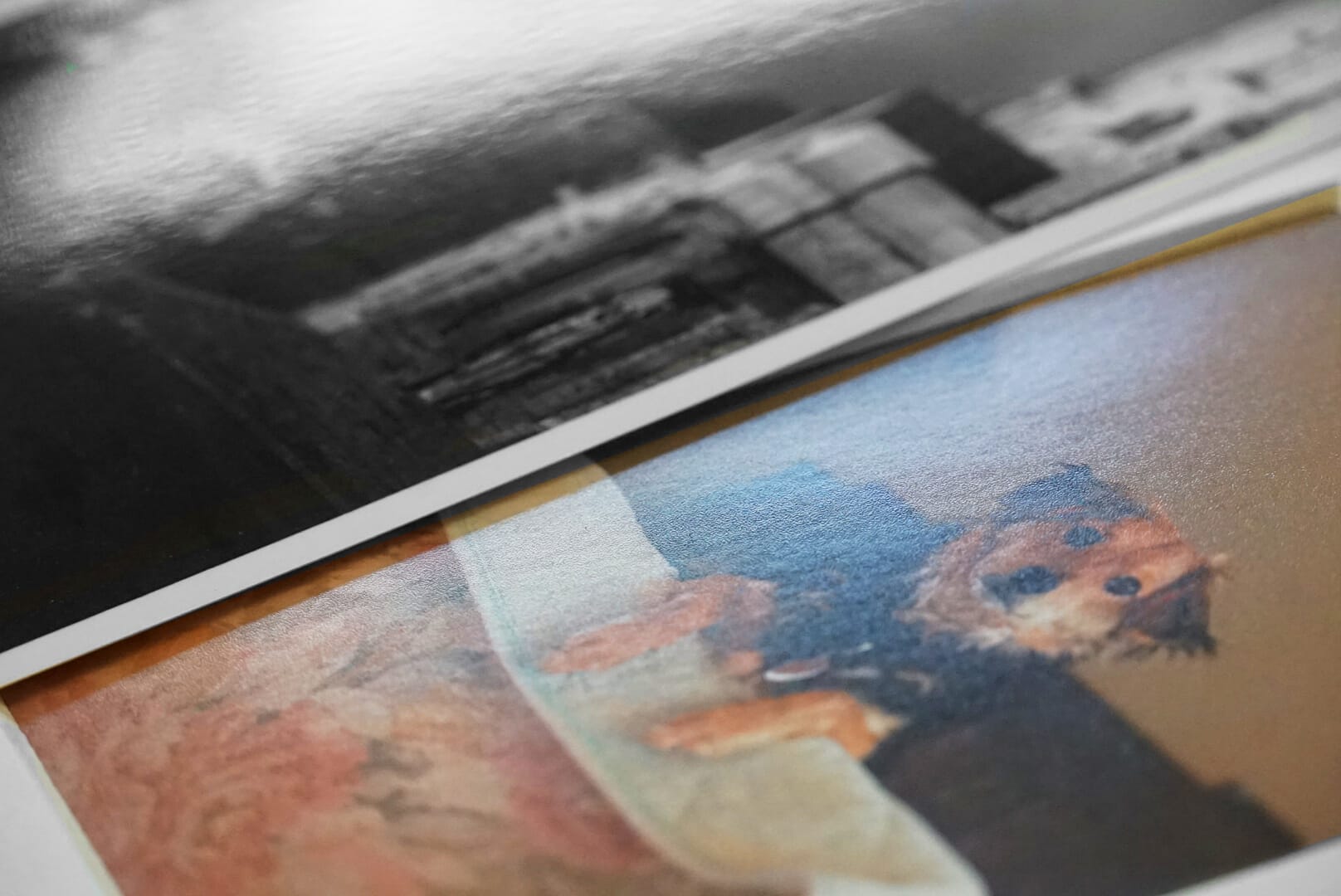
Just as learning to take a photo is an art, so too is printing. Learning the differences between glossy vs matte photo is the first step in understanding how to best show off your work.
To many, something as unassuming as paper may not mean much. However, it’s these seemingly small details that separate outstanding works from the rest of the pack.
